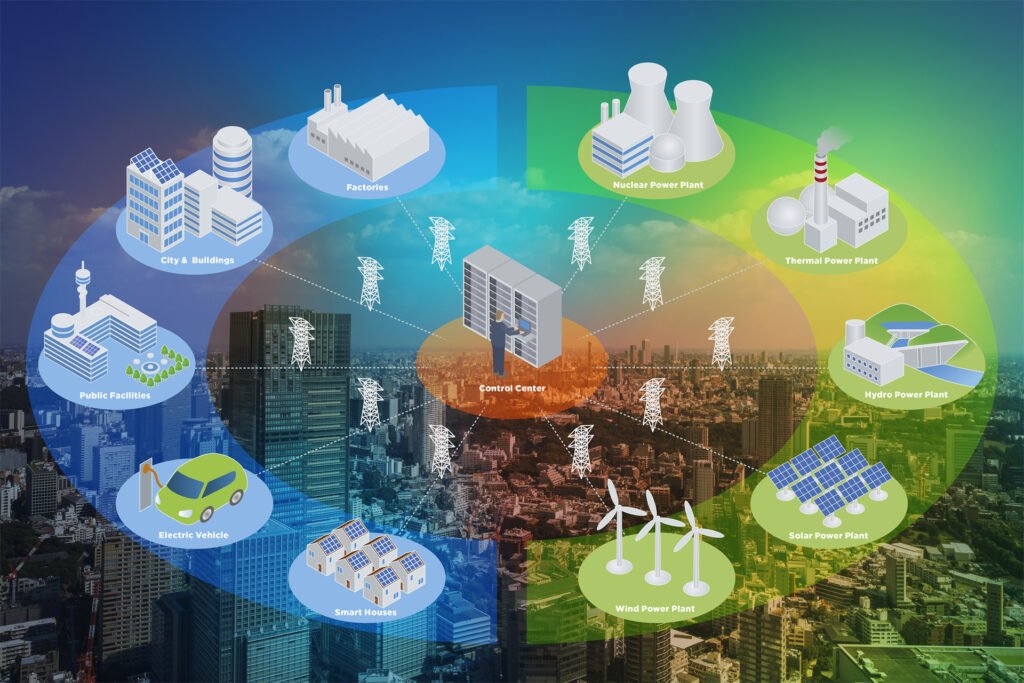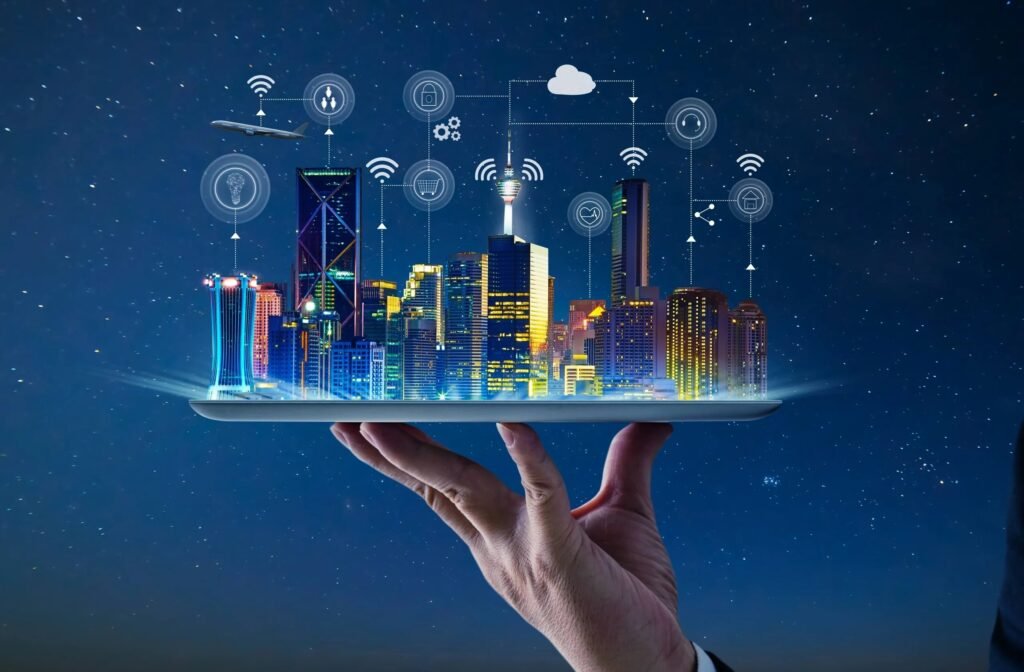Introduction to Infrastructure Development
Infrastructure development is a fundamental aspect of societal progress, playing a pivotal role in fostering economic growth, improving living standards, and facilitating technological advancements. It encompasses a wide range of components, including transportation networks, utilities, telecommunications, and various public infrastructure projects such as schools, hospitals, and parks. These elements collectively form the backbone of modern society, enabling the smooth functioning of daily activities and supporting essential services.
At its core, infrastructure development aims to create a robust framework that promotes connectivity and accessibility. This is particularly important in the context of urban development, where the successful integration of public infrastructure can lead to enhanced efficiency in the movement of goods and people. With the rise of smart cities, the emphasis on implementing innovative solutions and renewable energy projects has become increasingly significant. These initiatives address contemporary challenges, including climate change and urban sprawl, while ensuring that infrastructure remains sustainable and responsive to the needs of future generations.
A well-developed infrastructure system is crucial not only for economic activities but also for social cohesion. Schools and healthcare facilities serve as critical components that enhance quality of life, while efficient transportation networks facilitate access to jobs and services. Investment in infrastructure can stimulate job creation and generate long-term economic benefits, thus underscoring its importance in planning and development strategies. As we advance in this era of rapid technological evolution, understanding the multifaceted nature of infrastructure development becomes essential in charting a path toward sustainable growth and improved public welfare.
Current Trends in Infrastructure Development
Infrastructure development is currently undergoing significant transformation, driven by several trends that reflect the need for modern solutions to contemporary challenges. One of the most prominent trends is the emphasis on sustainability practices. As concerns regarding climate change intensify, infrastructure projects are increasingly focusing on integrating green technologies and renewable energy projects. This shift not only seeks to reduce the environmental impact of construction but also promotes long-term resilience in public infrastructure through sustainable resource management.
The rise of smart city technologies is another critical trend influencing infrastructure development. Cities are leveraging data and advanced analytics to optimize urban development and enhance the efficiency of transportation networks. From intelligent traffic systems to energy-efficient buildings, smart technologies facilitate better management of resources, leading to improved infrastructure services. This integration of technology also fosters improved connectivity, making cities more accessible and attractive for investment.
Moreover, the impact of digital transformation cannot be understated. The adoption of digital tools and platforms is revolutionizing how infrastructure projects are planned and executed. Building Information Modeling (BIM), for example, enables real-time collaboration among stakeholders, resulting in more effective decision-making and streamlined project delivery. This has paved the way for enhanced transparency and accountability within the public sector, fostering trust among community members.
Lastly, the shift towards public-private partnerships (PPPs) represents a significant evolution in infrastructure financing. Governments are increasingly collaborating with private entities to fund and manage infrastructure projects, allowing for shared risk and innovative solutions. Such partnerships are particularly vital in developing infrastructure that meets the demands of urban growth while maintaining fiscal responsibility. Collectively, these trends are shaping contemporary infrastructure efforts, ensuring they meet the needs of future generations.

Funding and Investment in Infrastructure
Infrastructure development is a critical component of urban development, necessitating substantial funding and investment. A variety of funding sources are instrumental in advancing public infrastructure projects, which may include government funding, private investments, and international loans. Each of these funding avenues plays a unique role in establishing transportation networks and developing smart cities that cater to modern needs.
Government funding often constitutes a significant share of the financial resources allocated for infrastructure projects. Typically sourced from taxpayer contributions, federal, state, and local government bodies budget substantial amounts for transportation networks, renewable energy projects, and other vital infrastructure. These funds are essential for maintaining and upgrading existing systems to meet growing demands efficiently.
In addition to government resources, private investment has emerged as an essential mechanism for funding infrastructure projects. Private sector participation can facilitate the timely completion of urban developments and enhance the quality of public infrastructure. Public-private partnerships (PPPs) have gained traction, allowing private entities to finance, build, and operate specific infrastructure projects while ensuring efficient service delivery.
International loans serve as another viable option, particularly for developing countries looking to expand their infrastructure capacity. Financial institutions, such as the World Bank and regional development banks, provide loans at preferential rates to support large-scale urban development initiatives. These loans often come with specific stipulations to ensure that the funded projects address the pressing demands of the communities they serve.
Innovative financing models, including green bonds, represent a burgeoning trend aimed at attracting investment into renewable energy projects and smart city solutions. These bonds enable investors to fund initiatives that promote environmental sustainability while generating returns on their investments. By diversifying funding sources and approaches, stakeholders can enhance the feasibility and success of infrastructure development efforts.
Challenges in Infrastructure Development
Infrastructure development is a complex undertaking that plays a vital role in realizing effective public infrastructure systems. However, these projects often face numerous challenges that can hinder progress and impact their success. A significant obstacle arises from regulatory hurdles. Infrastructure initiatives must navigate a myriad of regulations at local, state, and federal levels, which can vary significantly. These regulations are designed to ensure safety and accountability but can often result in project delays and increased costs.
Another prominent challenge in infrastructure development is the integration of technology. As cities evolve into smart cities, the incorporation of advanced technologies into transportation networks and energy systems becomes essential. The process of integrating these technologies can be complex and costly, particularly when existing infrastructure is outdated. Stakeholder management also poses a significant challenge, as numerous parties, including government agencies, private sector partners, and community organizations, must be engaged throughout the development process. Effective communication and collaboration among these stakeholders are crucial; however, differing priorities and conflicting interests can complicate project execution.
Environmental concerns are an also critical consideration in infrastructure development. Projects can significantly impact local ecosystems, which necessitates comprehensive environmental assessments and mitigation strategies to address potential negative effects. Additionally, the growing emphasis on sustainable solutions has led to an increasing need for renewable energy projects, which often require new infrastructure and can face opposition from various stakeholders.
Budget overruns are another frequent challenge in infrastructure development. Accurate forecasting is essential, yet unforeseen circumstances such as changes in material costs or delays due to regulatory reviews can jeopardize financial planning. Consequently, implementing robust financial management strategies is vital to safeguard against these risks. Addressing these challenges effectively is paramount to the successful realization of infrastructure development projects, ensuring they align with the broader goals of urban development and serve the needs of the community.
The Role of Technology in Infrastructure Development
Technology plays a pivotal role in the transformation of infrastructure development, enacting significant improvements across various sectors, including public infrastructure and urban development. Innovations such as the Internet of Things (IoT), Building Information Modeling (BIM), and Artificial Intelligence (AI) are fundamentally changing how infrastructure is planned, constructed, and maintained. These advancements are enabling decision-makers to optimize operational efficiency, enhance safety, and promote sustainability in their projects.
IoT technologies facilitate the real-time monitoring of transportation networks and other public utilities, enabling project managers to gather critical data on usage patterns and conditions. This data-driven approach allows for more informed decisions, resulting in better maintenance strategies and resource allocation. For example, smart cities are leveraging IoT sensors to manage traffic flow, reducing congestion and enhancing commuter experiences while minimizing environmental impacts.
Building Information Modeling (BIM) represents a revolutionary shift in project management for infrastructure development. This 3D modeling technology integrates various data sources, allowing stakeholders to visualize the entire project lifecycle from design to decommissioning. BIM enhances collaboration among architects, engineers, and contractors, leading to reduced miscommunications and errors during construction. Furthermore, by simulating different scenarios, decisions regarding renewable energy projects can be made with greater accuracy, helping to further align projects with sustainability goals.
Artificial Intelligence (AI) is also making inroads into infrastructure development by streamlining processes and enhancing predictive capabilities. AI-powered analytics can forecast project delays, optimize resource schedules, and improve safety measures by identifying potential hazards before they could lead to incidents. Through these innovative applications, infrastructure developers are harnessing technology to create resilient and efficient systems that will shape the future of urban living. Overall, the integration of advanced technologies holds immense potential for revolutionizing infrastructure development.

Sustainable Infrastructure Practices
The importance of sustainability in infrastructure development cannot be overstated, especially in the context of urban development and public infrastructure. The principles of sustainable design focus on minimizing environmental impacts while maximizing efficiency and utility. This involves the careful consideration of materials, technologies, and practices that promote ecological balance and resource conservation.
Utilizing eco-friendly materials is a cornerstone of sustainable infrastructure practices. These materials are often derived from renewable resources, thus reducing the carbon footprint associated with traditional construction methods. Additionally, their use can enhance the durability and resilience of infrastructure projects, making them better suited to withstand the challenges posed by climate change. For example, using recycled steel or sustainable timber can lead to significant reductions in greenhouse gas emissions during construction.
Energy-efficient technologies play a critical role in reducing resource consumption across transportation networks and buildings. Innovations such as smart grids, LED lighting, and energy-efficient HVAC systems can drastically cut energy usage. Furthermore, integrating renewable energy projects, such as solar panels and wind turbines, allows urban areas to generate clean energy on-site, promoting energy independence and reducing reliance on fossil fuels.
Incorporating green spaces into urban planning is another vital aspect of sustainable infrastructure development. Urban parks and green roofs contribute to biodiversity, improve air quality, and create pleasant environments for residents. They can also mitigate the urban heat island effect, which is increasingly relevant in densely populated areas. By creating interconnected green areas, cities can promote healthier lifestyles and enhance community well-being.
Overall, the balance between infrastructure development and environmental stewardship is crucial. Investing in sustainable infrastructure not only addresses immediate needs but also fosters long-term benefits for future generations. This approach positions cities to thrive as smart cities, integrating advanced technology with ecological responsibility.
Case Studies of Successful Infrastructure Projects
Infrastructure development plays a pivotal role in shaping modern society, serving as the backbone for economic growth and community welfare. Numerous projects around the globe showcase successful strategies that can be emulated in future endeavors. The following case studies highlight exemplary infrastructure projects that have redefined public infrastructure, urban development, and transportation networks.
One noteworthy example is the High Line in New York City, an innovative approach to urban development that transformed an abandoned railway into an elevated public park. By integrating green spaces into the urban landscape, the High Line not only revitalized a neglected area but also stimulated local businesses and encouraged tourism. It embodies best practices in infrastructure development by prioritizing community involvement and environmental sustainability, ultimately leading to richer quality of life for its users.
Another significant project is the Masdar City in Abu Dhabi, designed to be one of the world’s most advanced eco-cities. From the outset, the city was built with renewable energy projects at its core, utilizing solar power and wind energy to meet its energy needs. This ambitious project aims to create a blueprint for smart cities around the globe, demonstrating that sustainable infrastructure can lead to substantial economic benefits while fostering a livable environment.
Furthermore, the expansion of Singapore’s urban transport system highlights the successful integration of effective transportation networks. The city-state has continuously invested in its mass transit systems, resulting in one of the most efficient public transportation networks worldwide. Such investments not only improve connectivity but also reduce traffic congestion, thus contributing to overall urban development.
These cases illustrate the potential of innovative infrastructure projects to foster economic growth and enhance community welfare. By adopting similar strategies, future infrastructure development can continue to evolve and address contemporary challenges effectively.
The Future Outlook for Infrastructure Development
The landscape of infrastructure development is constantly evolving, shaped by a multitude of factors that include technological advancements, economic considerations, and societal needs. As we look towards the future, it becomes evident that effective urban development will heavily rely on innovative strategies that address the pressing challenges of our times, such as climate change and rapid urbanization. One of the primary trends anticipated is the shift towards sustainable public infrastructure, which prioritizes the environmental impact of projects and aims to minimize carbon emissions through the integration of renewable energy projects.
Another significant trend is the increasing integration of smart technology within transportation networks. This encompasses a range of advancements, including the implementation of intelligent transportation systems that optimize traffic flow, reduce congestion, and enhance safety. The development of smart cities, which leverage data and technology to improve urban living, will be crucial in managing the complexities of future urban environments. Leveraging big data analytics, cities can better anticipate infrastructural needs and streamline development processes.
Moreover, emerging technologies such as building information modeling (BIM) and automation are set to revolutionize the construction and maintenance of infrastructure. These technologies allow for more efficient project management and execution, reducing costs and construction time while improving quality and adaptability of public infrastructure. As investments in infrastructure development increase globally, it becomes vital for policymakers to prioritize strategic planning and adapt to these new technological realities, ensuring that projects meet the needs of communities both now and in the future.
Overall, the interplay between climate considerations, technological advancements, and urbanization will lead to a profound transformation in how we approach infrastructure development. By anticipating these changes, stakeholders can make informed decisions that will foster sustainable and resilient communities.

Conclusion: Building Resilient Infrastructure for Tomorrow
In today’s rapidly evolving world, the importance of infrastructure development cannot be overstated. As urbanization accelerates and populations continue to grow, the demand for robust public infrastructure is more critical than ever. Effective infrastructure provides the foundation upon which economic stability and social well-being are built. Proper investment in transportation networks, coupled with smart city initiatives, can significantly enhance connectivity and foster economic opportunities across various sectors.
The need for innovation in infrastructure development is paramount. As cities become more complex, the integration of renewable energy projects into urban planning can lead to sustainable growth that addresses environmental concerns. It is essential that stakeholders—from government authorities to private sector investors—actively engage in planning strategies that prioritize not only the immediate needs of communities but also their long-term resilience. This approach ensures that infrastructure is designed for adaptability, considering future challenges like climate change and technological advancements.
Moreover, the discourse surrounding infrastructure development should encompass a collaborative effort among various sectors. Public-private partnerships can serve as a powerful mechanism to leverage resources and expertise, ensuring that infrastructure initiatives are not only financially viable but also socially inclusive. By fostering collaboration and prioritizing strategic investments, we can build infrastructure that supports both urban development and improved quality of life for all citizens.
Ultimately, the future of infrastructure lies in our collective ability to prioritize thoughtful planning and sustainable practices. By doing so, we pave the way for a resilient infrastructure framework that accommodates growth, embraces innovation, and addresses the ever-changing landscape of societal needs. As we look forward, it is crucial that we commit to robust investments in our infrastructure, as this will be instrumental in shaping thriving communities for generations to come.